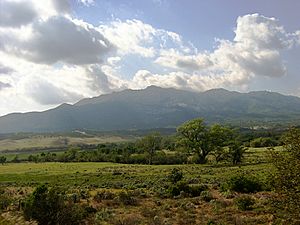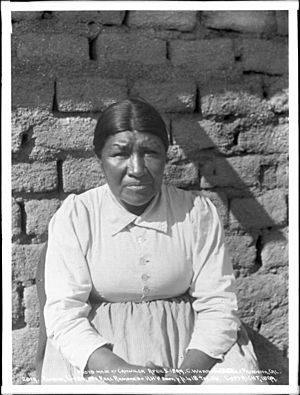Ramona Band of Cahuilla facts for kids

The Cahuilla Mountains in Anza, California
|
|
| Regions with significant populations | |
|---|---|
| United States (California) | |
| Languages | |
| English, Cahuilla language | |
| Religion | |
| traditional tribal religion, Christianity (Roman Catholicism) |
|
| Related ethnic groups | |
| Cahuilla tribes |
The Ramona Band of Cahuilla is a group of Native American people. They are part of the larger Cahuilla tribe. This tribe is officially recognized by the United States government. They live in Riverside County, California.
Who Are the Ramona Band of Cahuilla?
The Ramona Band of Cahuilla is a special group of Cahuilla people. They are one of many Native American tribes. The United States government officially recognizes them. This means they have a special relationship with the government. It also means they have certain rights as a sovereign nation. They are located in Riverside County, California.
Their Home: The Ramona Indian Reservation
The Ramona Band of Cahuilla lives on the Ramona Indian Reservation. This reservation was created in 1893. It is like their own special homeland. The reservation is about 560 acres (2.3 square kilometers) in size. It is located in Anza, California. This area is at the base of Thomas Mountain.
The land where the reservation is located has a long history. It was once the territory of the Sauppalpisa people. It was also a traditional gathering place for the Cahuilla people. They would hold important ceremonies and meetings there.
Cahuilla Culture and History
The Cahuilla people have a rich history and culture. They have lived in Southern California for thousands of years. They are known for their strong connection to the land. They also have unique traditions and languages. The Cahuilla language is still spoken by some members of the tribe. Many Cahuilla people also speak English today.
The Cahuilla people have traditional beliefs. Some members also practice Christianity, especially Roman Catholicism. Their culture includes stories, songs, and dances. These traditions help pass down their history to new generations.


